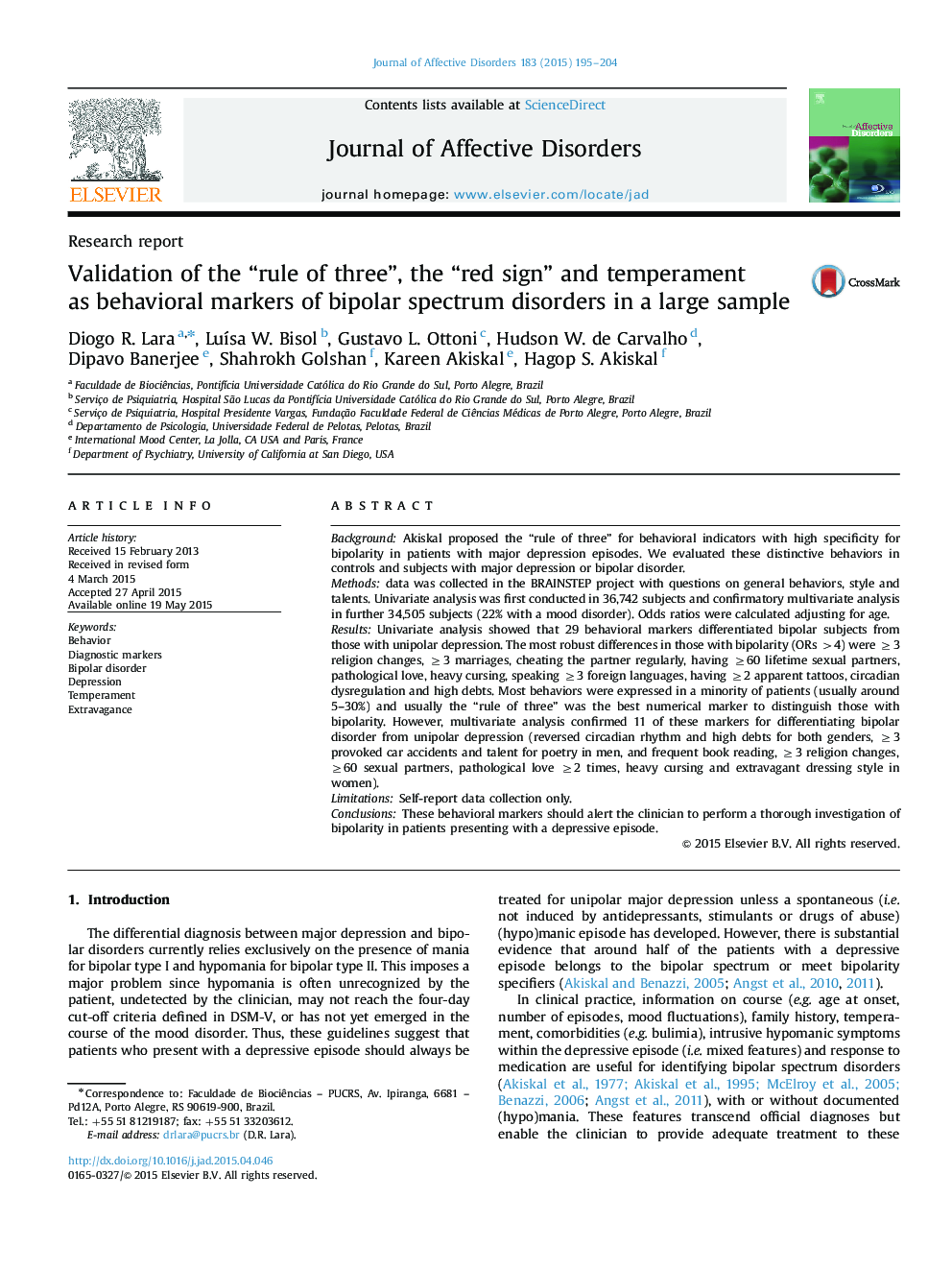| کد مقاله | کد نشریه | سال انتشار | مقاله انگلیسی | نسخه تمام متن |
|---|---|---|---|---|
| 6231467 | 1608142 | 2015 | 10 صفحه PDF | دانلود رایگان |

- Akiskal׳s proposal of the “rule of three” has not been empirically tested.
- We tested this hypothesis in a large internet sample (>70,000 subjects).
- Univariate analysis showed that 29 markers were overexpressed in bipolar groups.
- In multivariate analysis, 11 markers differentiated unipolar from bipolar groups.
- These markers may help precise clinical evaluation of major depressive episodes.
BackgroundAkiskal proposed the “rule of three” for behavioral indicators with high specificity for bipolarity in patients with major depression episodes. We evaluated these distinctive behaviors in controls and subjects with major depression or bipolar disorder.Methodsdata was collected in the BRAINSTEP project with questions on general behaviors, style and talents. Univariate analysis was first conducted in 36,742 subjects and confirmatory multivariate analysis in further 34,505 subjects (22% with a mood disorder). Odds ratios were calculated adjusting for age.ResultsUnivariate analysis showed that 29 behavioral markers differentiated bipolar subjects from those with unipolar depression. The most robust differences in those with bipolarity (ORs >4) were â¥3 religion changes, â¥3 marriages, cheating the partner regularly, having â¥60 lifetime sexual partners, pathological love, heavy cursing, speaking â¥3 foreign languages, having â¥2 apparent tattoos, circadian dysregulation and high debts. Most behaviors were expressed in a minority of patients (usually around 5-30%) and usually the “rule of three” was the best numerical marker to distinguish those with bipolarity. However, multivariate analysis confirmed 11 of these markers for differentiating bipolar disorder from unipolar depression (reversed circadian rhythm and high debts for both genders, â¥3 provoked car accidents and talent for poetry in men, and frequent book reading, â¥3 religion changes, â¥60 sexual partners, pathological love â¥2 times, heavy cursing and extravagant dressing style in women).LimitationsSelf-report data collection only.ConclusionsThese behavioral markers should alert the clinician to perform a thorough investigation of bipolarity in patients presenting with a depressive episode.
Journal: Journal of Affective Disorders - Volume 183, 1 September 2015, Pages 195-204